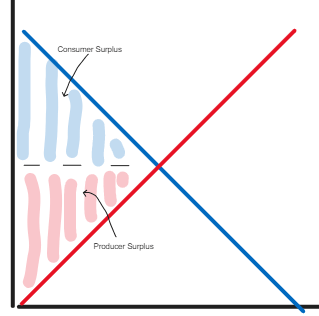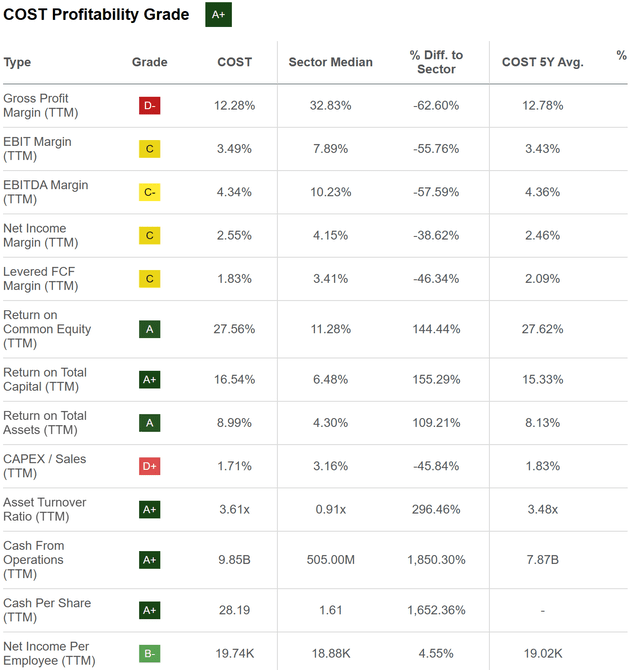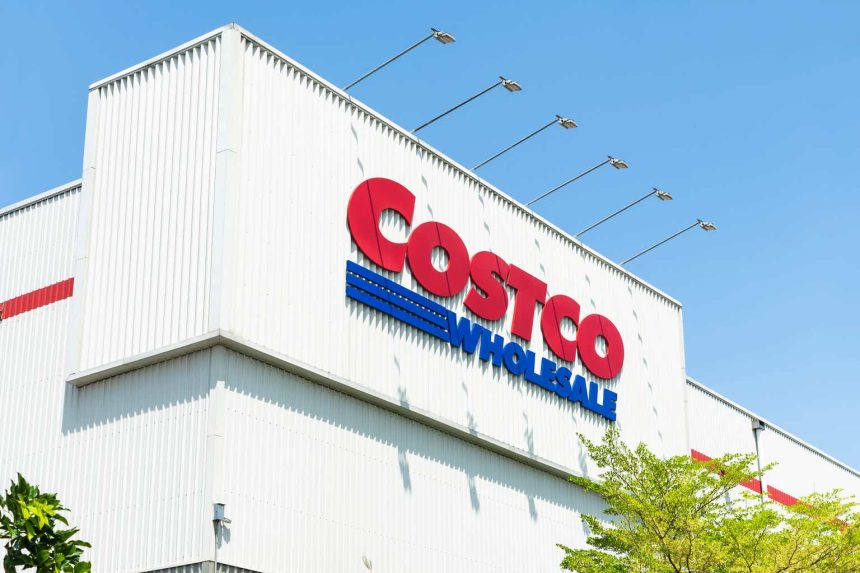Introduction
As one earnings season is about to fade away and another is about to unwind, we have a big name yet to report earnings. Costco (NASDAQ:COST) will report its Q4 2023 earnings at the end of the month. Clearly, this is not just a quarterly report, but, being Q4, it brings with it a whole fiscal year.
Costco’s earnings must be watched closely. In fact, Costco is a stock very difficult to buy at a discount because, more often than not, it often trades at a premium. However, I have come to see how a couple of times a year, the stock undergoes a sell-off, opening up the chance for investors to initiate or increase a position.
What should we expect from the upcoming report? In this article, I will share what I consider the main elements to look at to assess the company’s performance.
Summary of previous coverage
I started covering Costco when last year, after disappointing earnings from Walmart (WMT) and Target (TGT), Costco traded down, too. I felt investors were mixing apples with oranges because Costco, though a retailer, runs a different business model from the other two companies.
In fact, Costco is anchored to two main pillars:
- It’s a top-line company. This means it’s not focused on harvesting margins on the products it sells. Its main focus is to drive sales. The way to raise margins is by lowering prices and increasing sales. Costco is operated so efficiently that an extra percentage of comparable sales does more to its margins than raising prices on the items it sells.
- Its hidden asset its customers’ loyalty to the membership program. This is where Costco’s profitability comes from, providing continuing fee revenue from where about 58% of Costco’s net income comes from.
Costco’s business model is so effective that it has actually been able to inspire Jeff Bezos in changing Amazon’s (AMZN) business model, as I outlined in these two articles:
- The Influence of Costco On Amazon Prime
- How Amazon Expands Costco’s Business Model
After these articles, my research led me to better understand how Costco’s warehouses are designed and managed. This is one of many reasons why the issue of shoplifting is not hitting Costco as much as other retailers across the U.S.
Having said all that, I believe an investor can’t approach Costco’s stock without a well thought-out strategy to understand how to give a valuation of this stock. In fact, it is a stock many investors would want to own, but whose valuation scares away some of them.
Membership Fee Hike
Now, the big news everyone is waiting for is when Costco will raise its membership fees. In fact, Costco has the habit of increasing them every five to six years. Since the last hike was in June 2017, many were expecting a raise already in 2022. However, the company stuck to its customer-friendly culture and repeatedly stated it didn’t feel it was the right time to raise fees, given the hot inflation reports.
As the company said during the last earnings call
At the end of the day with the headline being inflation, we feel very good about if we want to do it, we do it without impacting in any meaningful way renewal rates or sign-ups or anything. And at some point, we will, but our view right now is that we’ve got enough levers out there to drive business and we feel that it’s incumbent upon us to be that beacon of light to our members in terms of holding them for right now. It’s not a matter of a big time, but we’ll let you know as soon as we know.
Sometimes I chuckle to myself thinking that the Fed is waiting for Costco to raise its fees as the unofficial confirmation that inflation has cooled down. Jokes aside, though with some ebbs and flows, inflation is not as hot as last year. More than six years have gone by since Costco’s last hike. Costco is closing a fiscal year. Well, there are many reasons to believe a hike is coming and it could be announced in this call. If it will, the stock will race upward almost with certainty. If the hike won’t be announced, then I expect it to come at the end of Q1 2024, which would make it coincide with the new year. Costco could even wait until next June, but I see that unlikely given how methodic the company is with its business.
The Concept Of Consumer Surplus
Since we have been talking about the membership fee, I think it can be nice to understand a concept well-known to those who have studied microeconomics: Consumer surplus. Understanding what it is and how it’s used can help us understand why and when Costco may raise its fees.
First of all, what’s consumer surplus? It’s a fundamental concept in microeconomics representing the additional benefit or value that consumers derive from a product or service over and above what they actually pay for it.
In other words, we calculate it by finding the difference between what consumers are willing to pay for a product and the price actually paid for it. If the price is lower than what consumers are willing to pay, we have consumer surplus. Therefore, consumer surplus measures consumer welfare.
We can see this concept in the graph I sketched. On the X axis we have the quantity of a product. On the Y axis we have the price. In blue you see the demand curve, showing how demand is higher when prices are lower and vice versa. The red line shows the supply curve. Inversely, supply is at its lows when prices are low. As prices increase, more producers are willing to sell a certain good. Consumer surplus is shown as the light blue area between the demand curve and the market price at which the good was sold (the dotted black line representing the Y-axis coordinate of the balance point between the demand and supply curves). The larger the area, the better consumers are off, for the simple reason they’re getting more value compared to the price they pay for a certain product.

Author
Let’s make up an example. We need a phone and we pay $100. To have that phone we were willing to pay up to $125. Since we paid only $100, we have a consumer surplus of $25, measuring the additional value we are getting above what we actually paid for it.
Why is this important for us while we are thinking about the membership program?
As inflation bumps prices up, the demand curve moves downward from left to the right, if all else (i.e. wages) stay equal. Therefore, consumer surplus decreases and customers feel they’re not getting as much value as before. Costco pays a lot of attention to this because it wants – above all, I would say – to be perceived as the go-to warehouse to find the best possible value.
Usually, producers try to capture consumer surplus, converting it to producer surplus. Costco, on the other side, wants its customers to perceive the area of consumer surplus is as large as possible when they purchase the goods in the warehouse. In fact, the average mark-up on goods Costco sells is in the low double-digits, 12%, 13%. Other traditional retailers range anywhere from 25% to 35% or even 100%.
Why is this so important? Because it’s this perception that makes customer stick to the membership program. Costco’s members are aware they receive a lot of value from the their annual membership fee, which is a quick and necessary pain to enjoy a full year of discounted prices and great offerings on quality goods.
But this actually creates a situation where the greater level of consumer surplus, the more Costco can charge an entry fee which consumers are willing to pay. This fee eats a little bit of consumer surplus, turning it into producer surplus. And here we are at Costco’s profits.
So, to summarize, Costco’s goal is to make consumer surplus as great as possible, to then take a little part of it with ease because its members are willing to give it up to the producer.
Understanding how consumer surplus works makes us understand better the strength of Costco compared to any other retailer.
Costco’s Upcoming Earnings
The top line
As said, in a few days we will have the quarterly results together with the full fiscal year results. Given what we have said about the business model of the company, the most important metrics to look at are comparable sales and the membership renewal rate.
At the end of Q3, Costco reported a 92.6% renewal rate in the U.S. and Canada, with 69.1 million paid household members and 124.7 million total cardholders, both up 7% YoY. Paid executive members are now 31.3 million, which is a 681,000 increase YoY. Executive members were at the end of Q3 at 45% of total paid members, making up around 73% of worldwide sales. This proves how customers are willing to pay higher membership fees given the value they perceive Costco offers them.
With FY2 2022 sales at $222.7 billion, we already know with accuracy what the FY 2023 results will be. In fact, Costco reports monthly its sales results.
Total revenues in the first three quarters are at $163.35 billion.
June sales were $22.86 billion, +0.4% YoY. For the 44 weeks ended July 2, 2023, Costco reported net sales of $196.93 billion, +4.6% YoY.
July sales came in at $17.6 billion, +4.5% YoY. For the 48 weeks ended July 30, 2023, Costco reported net sales of $214.53 billion, still 4.6% YoY.
August sales $18.42 billion, +5% YoY. For the 52 weeks ended August 25, 2023, Costco reported net sales of $232.95 billion, +4.6% YoY.
Since this fiscal year actually has a 53rd week, total sales will be a few billions higher. So they could come in around $236 billion which would make comparable sales increase 5.9% YoY.
Excluding the impacts from changes in gasoline prices and FX, comparable sales for the 52 weeks were in any case up.

Costco August Sales Results
It’s quite interesting that Costco is so predictable that we already know in advance of the earnings report what the top-line will look like.
If comparable sales go up, we can expect membership renewal rate to be at least flat, if not a little bit improved. We know customers are shopping at Costco’s warehouses and they don’t seem to get tired of doing so.
The bottom line
As far as the bottom line goes, investors should recall what the company said during its last earnings call
This year’s results included a non-recurring charge to merchandise costs of $298 million pretax or $0.50 per share, primarily for the discontinuation of our charter shipping activities. Last year’s results included a non-recurring $77 million pretax charge or $0.13 per share for incremental employee benefits. As many of you know, two years ago, we initially leased three ships and thousands of containers to help mitigate some of the significant overseas freight challenges that we were experiencing. Later, we added four additional vessels and several 1,000 additional containers with commitments made for up to – then three additional years. Procuring these ships and containers was integral to us being able to stay in stock for our members during those challenging times. It also allowed us to do so initially at a lower cost in the market rates at that time. Shipping and freight markets have improved dramatically since that time, which led us to reevaluate our position. In this third quarter, we concluded that would be appropriate to completely discontinue the remainder of our charter shipping activities. As a result of this decision, we recorded an impairment charge for all remaining charter assets. This decision allows our merchandising teams to take full advantage of the current shipping market rates as opposed to much higher contracted charter rates, in turn, this allows us to do what we do best and lower prices for our members.
In other words, even though Q4 earnings should be around $4.82, we still have the negative $0.50 negative impact per share on FY EPS. Overall, net income should be a bit down YoY because of a few non-recurring items, as said above. My forecast is a net income at $5.75 billion (-1.5% YoY) thanks to the 53rd week. On an estimated revenue of $236 billion, this is a net income margin of 2.4%. EPS should be thus between $12.93 and $13.00, depending on the latest share repurchases that haven’t still been disclosed.
Investors should keep this EPS range in mind because anything very far from this could trigger a price surge or a price drop.
The Dividend
Costco initiated its dividend May 2004 at $0.10 per share or $0.40 annually. The dividend sits now at $4.08 annually, for a CAGR of 13%. Currently it returns to its shareholders around $1.8 billion.
Since Costco is a cash cow, the company sometimes finds itself sitting on a pile of cash it can’t use to fund new warehouses. When this happens, the company pays a special dividend out to its shareholders. The first special dividend of $7.00 was paid in December 2012, then another one of $5.00 was paid February 2014. In May 2017, the company paid another special dividend of $7.00. The last special dividend of $10.00 was paid in December 2020. We can see the special payments in orange, while the purple line shows Costco’s cash.

Costco is at record high cash right now. Every 2-3 years it pays a special dividend. Things are getting about right for a special payment. Here, again, it’s not a matter of if, but a matter of when this special dividend will be paid.
In any case, I don’t think the special dividend, though enticing, is the main reason to be long Costco. Costco is for those investors who are willing to pay a premium because they can see a long winning streak for the company for many years to come.
Valuation And Conclusion
Because of a very long-term horizon, it’s difficult to give a real target price for Costco. What I would rather assess is its compounding rate.
If I plug in Costco’s financials in a discounted cash flow model where FCF growth rate is expected to be around 6% for the next five years and then moderate to 3%, I see that Costco is overvalued by about 35%.

Author estimates, with financials from SA
However, as said many times, Costco’s valuation can’t be given by a simple cash flow model. It has some hidden assets that don’t appear directly in its financials, but that does create a lot of shareholder returns, customer loyalty being one of these. What’s more meaningful, to me, is Costco’s profitability, which is able to drive its compounding growth.
Seeking Alpha’s profitability grades are helpful to show what I’m talking about. As we can see, margins are not that outstanding, being all rated between C and D. But when we look at the returns and the cash from operations, we see a company that is able to obtain a very high return for each single dollar it pours back into its business.

Seeking Alpha
Overall, I’m constructing a portfolio where all my assets need to be outstanding under these profitability metrics, with return on capital that has to be quite above average (Costco is 155% above the sector average). When these metrics are right, investors can expect a long-term compounding trajectory that the stock will reflect. This is why I keep my buy rating before earnings, considering Costco’s story intact and actually improving.
Read the full article here



